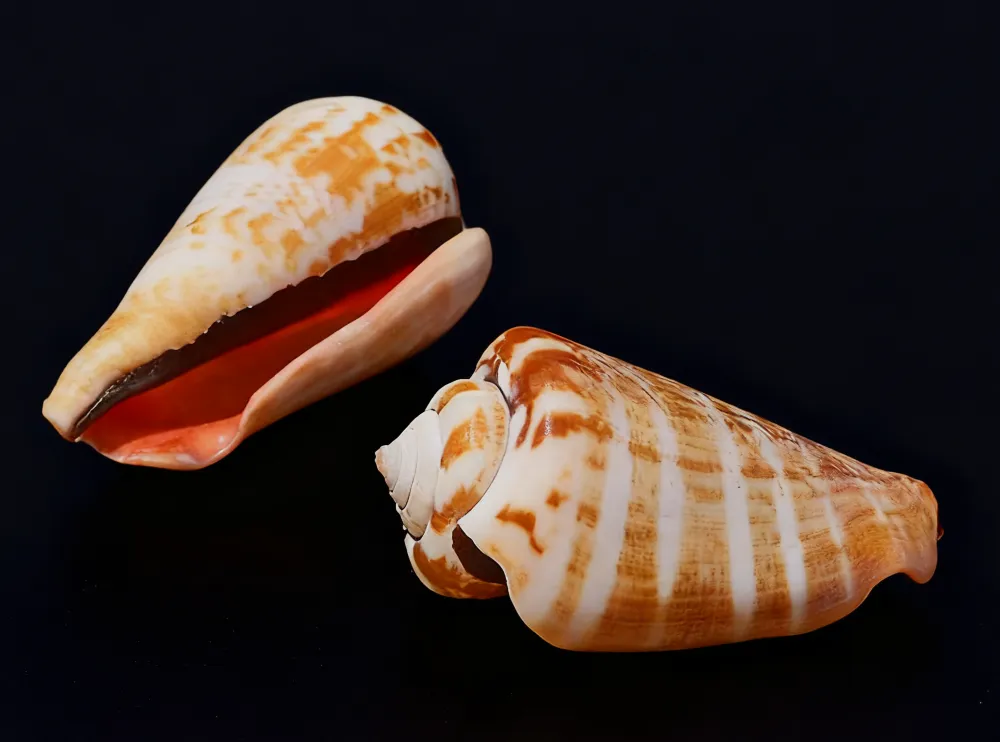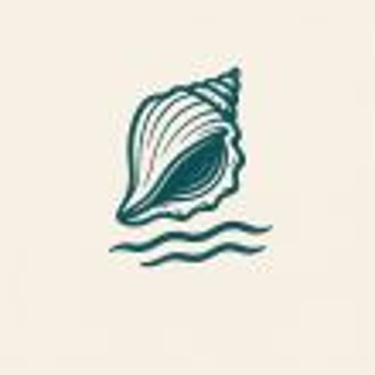
Orange Spotted Cone (Conus tessulatus)
Geometric Orange Spotted Cone Shell for Mosaics & Unique Crafts
$4.50
This is the shell that proves nature is the greatest mosaic artist. The Orange Spotted Cone is a study in delightful precision, its surface covered in a pattern of tiny, square or rectangular spots that look like hand-laid tiles. These spots, in warm shades of orange, brown, and rust, are set against a background of creamy white, pale blue, or light tan, creating a charming, checkerboard-like effect. It is a shell of order and whimsy, a miniature piece of geometric art that feels both playful and perfectly composed. It doesn’t have the wild danger of its cousins, but rather a quiet, cheerful charm that is impossible to resist.
From the Shore
Finding an Orange Spotted Cone is like discovering a tiny, sun-drenched treasure. Its pattern is so regular and pleasing to the eye, it almost doesn’t look real. I love turning it over in my fingers, feeling its smooth, glossy surface while admiring the perfect little “tiles” that cover it. The warm orange tones give it a friendly, inviting feel, like a little piece of a Mediterranean tiled floor washed up on the shore. Selecting them is a joy—you look for the sharpest, most defined patterns and the most vibrant, sunny colors.
Creative Ideas
The geometric pattern and warm colors of the Orange Spotted Cone make it perfect for cheerful and detailed projects.
Mosaic Art: This shell is a natural for mosaics! Its pattern perfectly complements tiled art, and it can be used whole or broken into pieces to add beautiful texture and color to picture frames, planters, or tabletops.
Whimsical Jewelry: Its small size and charming pattern make it ideal for delicate earrings, pendants, or bracelet charms that have a fun, artisanal feel.
Coastal Tablescapes: Scatter a handful of these in a bowl with some sand and sea glass for an instant pop of color and texture that brings a warm, beachy vibe to your home.
Each of these shells is a piece of the ocean’s art gallery, sustainably and ethically collected. They are crafted from natural Spotted Marbled Cone snails (Conus ebraeus), celebrated for their unique, dappled patterns and elegant conical form. Please remember that as a natural product, every shell will have its own unique variations in shape, size, and the beautiful patterns on its surface. These are the marks of a treasure, individually painted by the sea.
Every seashell is a gift from the ocean, and I pack each one with the care it deserves, ensuring its safe journey to you.
Preparation Time: I will carefully wrap your seashells in recycled paper and twine within 1-3 business days, making it feel like a personal gift from the sea.
Shipping Method: I use reliable standard shipping and will provide you with a tracking number, so you can follow your shell’s journey.
International Orders: For shells traveling across oceans, please allow a little extra time. Sometimes customs checks can extend their journey.
The ocean never creates two identical shells, making the one you receive truly one-of-a-kind.
Damaged in Transit: If your shell is damaged during its journey, please contact me within 24 hours of receipt with a photo. I will immediately send a replacement or issue a full refund.
Not as Described: I do my best to represent each shell accurately through photos and descriptions. If you feel your shell is significantly different from what was described, please contact me within 7 days, and we will find a thoughtful solution.
A Note on “Change of Mind”: As each shell is a natural, unique item, I cannot accept returns or exchanges due to a “change of mind.” Please review the photos and dimensions carefully to ensure it’s the perfect “ocean companion” for you.
The scientific name tessulatus comes from the Latin word tessella, which means “small square tile” or “tessera”—the individual tiles used to create a Roman mosaic. It’s a perfect name that perfectly describes the shell’s most famous feature.
Like all Cone snails, the Orange Spotted Cone is a venomous predator. It uses its harpoon-like, venom-tipped tooth to hunt other marine snails and worms. Always handle with extreme caution and never pick up a live cone shell.
Because of its relatively small size and attractive pattern, it is a very popular shell for collectors, especially for those who appreciate the more subtle and geometrically patterned varieties of cones.
